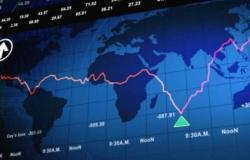China, against the rest of the world. After the European Union and the United States, which have put in place customs barriers against the import of Chinese electric vehicles, it is the turn of emerging countries to fear a flood of products coming from the second largest economic power in the world. world. One sector in particular crystallizes their concerns, that of the steel industry.
Read the decryption | Article reserved for our subscribers How China is crushing European industry
Add to your selections
With construction sites at a standstill, China, whose steel consumption alone represented nearly a quarter of global demand, is seeking to sell its stocks abroad. In 2023, prices fell and Chinese steel exports increased by 33%, leading Chile, Brazil and Mexico to immediately raise their customs duties. Others, like India, the Philippines, Vietnam and Turkey have launched anti-dumping investigations.
Soya, another sector which is suffering from overproduction in China due to a drop in pork consumption, is also exported massively. Over the first four months of 2024, exported quantities reached 600,000 tonnes, up 500% compared to the same period in 2023. “Many sectors are overcapacity, analyzes Camille Boullenois, associate director at the Rhodium Group research firm, and this is not necessarily good news for developing countries which export less to China and are suffering a drop in world prices. »
Trade balance
With domestic consumption at half-mast, Chinese exports, measured in dollars, jumped 7.6% in May compared to the same month in 2023, while imports rose only 1.8%. “At the end of the Covid pandemic, China has put the turbo back into the development of its manufacturing industry to take over from a stalled construction sector”explains Sébastien Jean, holder of the Jean-Baptiste Say chair of industrial economics at the National Conservatory of Arts and Crafts (CNAM).
In a note published in May, the Japanese investment bank Nomura notes that the trade relationship between China and Asia “is undergoing a structural change”, with Chinese exports to Asia increasing and imports decreasing. The trade balance of countries in the region with Beijing continues to deteriorate. The deficit widened to 192.6 billion dollars in 2023 (180.44 billion euros), while ten years earlier, in 2013, the surplus was 24.5 billion dollars. Recently, Ong Kian Ming, Malaysia’s former deputy trade minister, expressed concern that China’s industrial overcapacity is turning the rest of the world into a “vast dump of [ses] products ».
You have 50.59% of this article left to read. The rest is reserved for subscribers.







